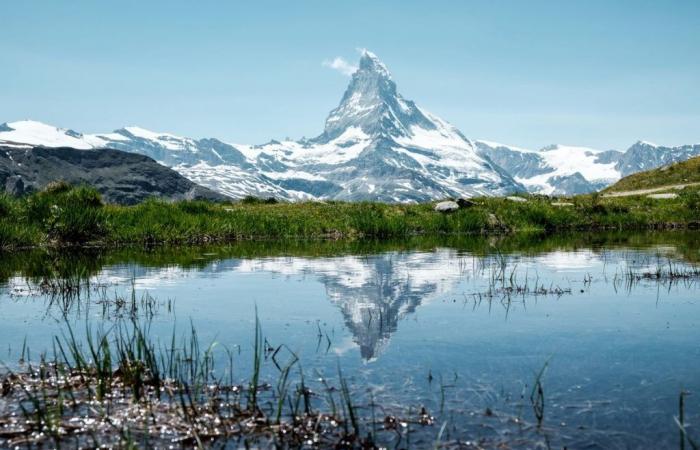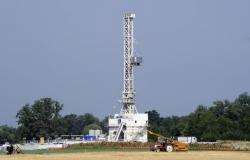– Summer consumes Swiss glaciers
No respite for Swiss glaciers, which, despite a very snowy winter, lost 2.4% of their volume this year in the summer heat. This is less than in 2022 and 2023, but higher than the average for the decade.
Published today at 4:00 p.m.
Switzerland and Italy recently had to redraw their border at the foot of the Matterhorn because the water separation line was modified after the melting of a glacier.
JoaoBranco/Unsplash
Subscribe now and enjoy the audio playback feature.
BotTalk
The melting of Swiss glaciers this year is “massive again”, commented the director of the Swiss glaciological survey network (Glamos), Matthias Huss, to AFP. Glaciers “are on the verge of disappearing,” he warned, saying that “they will only be here in 100 years if we can stabilize the climate.”
The hydrological year (October 1, 2023 to September 30, 2024) will have been “exceptional both in terms of accumulation and melting” for Swiss glaciers, according to the annual Glamos study published on Tuesday. The melting, very impacted by climate change, is “a little more moderate” compared to 2022 and 2023, during which a total of around 10% of the Swiss glacial volume disappeared, a record.
The annual volume reduction has fluctuated between -1% and -3% per year over the past two decades, with the exception of 2022 and 2023. But this year’s 2.4% loss exceeds the decade average 2010-2020, which amounted to 1.9%.
According to Glamos surveys carried out on 20 Swiss glaciers, extrapolated to all 1,400 glaciers in the Alpine country, their overall volume should be 46.4 km³ at the end of 2024, or almost 30 km³ less than in 2000.
“Considerable”
Their surface area is estimated at 775 km2, a decrease of 28% compared to 2000. Although lower than the last two years, the loss of volume in 2024 remains “considerable given the snow cover which is significantly above average » which prevailed at the end of winter.
Until June, Swiss glaciers benefited from exceptionally favorable conditions: winter snow 30% more abundant than average and a rainy start to summer. But the summer heat, the absence of fresh snow in summer and the dust from the Sahara dampened the hopes of the director of Glamos, who said he was “disappointed once again” but “not too surprised”.
According to this organization, three factors explain the significant reductions in glaciers in 2024.
First of all, the summer heat, with very high average temperatures in July and August. At the highest MeteoSwiss weather stations, the values for August were even higher than those of 2003 and 2022, two particularly warm years.
Historical font
The glaciers also suffered from the lack of snowfall in July and August. Finally, the coloring of the surface of the snow cover by dust from the Sahara in winter and spring accelerated the melting, making August the month with the greatest loss of ice since measurements began.
This dark deposit on the ice leads to a reduction in the albedo effect, whereby the lighter a surface is, the more it reflects light and therefore heat. Glamos is not yet able to precisely quantify the effect of Sahara dust, but the study considers it “plausible” that it leads to an increase in melting rates of 10 to 20% compared to normal conditions.
The result of this massive melting is alarming: “glaciers can no longer supply very large quantities of meltwater to areas located downstream,” according to Glamos. The study highlights, for example, that the six meters of snow measured on the Claridenfirn glacier in mid-May had completely disappeared by September. This illustrates “the urgent need to act now, and not in one, two or three decades” in the face of global warming, underlines Mr. Huss, while the melting of glaciers will pose significant problems for the management of water resources. . Switzerland and Italy recently had to redraw their border at the foot of the Matterhorn because the water separation line was modified after the melting of a glacier.
Several glaciers are now partly covered with geotextile tarpaulins for part of the year to protect them from the heat. But this only reduces melting by around 50%, according to Mr. Huss: “It is not done to save a glacier” but to maintain economic activity at a specific location, such as a ski slope.
AFP
Did you find an error? Please report it to us.






